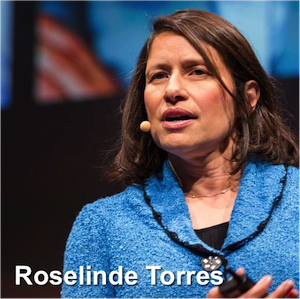Pocketblog has gone back to basics. This is part of an extended management course.
There was a time when the now traditional budgeting process did not exist. It emerged in the early twentieth century as a mechanism to exert central control on increasing large corporations with more and more regions and divisions. It put the power at the centre and constrained senior management in the regions and divisions to comply.
We looked some time ago at the triptych of mission, vision and values. Once these are agreed, senior managers can develop a strategy for the business and, from that, plans for the coming year. When costs and revenues are allocated to those plans, the costs can be divided among the regions, divisions and functional groups, to create a budget.
Budgeting is therefore a process that reinforces a static hierarchy, centralised control, and a fixed plan for the coming year. It happens in the overwhelming majority* of businesses; including Barnstaple Corp, a fictional US headquartered global manufacturer.
Barnstaple Corp
This results in Barnstaple having a high level of control over how and where it spends its investment money – able to channel cash to the regions and operating divisions where HQ analysis can see the great growth potential. Down on the ground, however, individual managers who are responsible for distinct product lines feel frustrated. They have very little true decision-making capacity and are forced to manage their business with no more resources than they are given.
Some can see huge local opportunities, which they are unable to exploit due to lack of central funding. It is not that budgets cannot be adjusted mid-year; but the effort, bureaucracy and politicking required to negotiate this with HQ leaves many of them with a fatalistic attitude. They know that if they were given more autonomy, they could make more money for their bosses, but they feel as if nobody really cares about the profits of their one product line.
Idlas
Idlas works very differently. It is a fictional European headquartered retailer, that gives everyone of its employees in 24 countries a simple message: continually find and implement ways to serve our customers better. Anyone in the business can make a decision and primary levels of leadership are devolved to clusters of stores of no more than 50 to 60 branches. Headquarters serves as a resource pool for company-wide services, but individual senior managers at cluster level can opt out of those services if they can find alternatives that allow them to provide better service to their customers.
All decision-making at Idlas is governed by a few over-arching corporate values and promotions tend to be internal, locking those values into the company’s DNA. To support decision-making, HQ provides a constant stream of high quality information, that is openly available to any manager.
Similar and Different
Both Barnstaple and Idlas are highly admired companies making large profits for their shareholders. Both have very real equivalents in the world – each on both sides of the Atlantic, although the Idlas equivalents are far rarer than the Barnstaples. Both are extreme and idealised counterparts of their real-world equivalents – yet neither is very far from the reality of typical businesses of their type.
But both have a very different response to the VUCA** environment in which most large corporates are trading – and in which most small businesses trade too.
Barnstaple husbands its resources carefully, using centralised expert analysts to predict where they will be needed and a budgeting process that allocates them accordingly. Scrutiny of requests for budget variances happens centrally.
Idlas lets local managers read the local conditions and optimise as they go, drawing down on central resources, to invest what they judge necessary to maximise customer service and therefore profit.
Scrutiny takes place far more locally than at Barnstaple, among peers in the region.
* I am tempted to say 97.6 per cent of businesses, knowing that 98.3 percent of statistics are made up and that only 1.4 per cent of readers ever try to check a statistic and that only 21.2 per cent of them are ever persistent enough to get an answer. But I shan’t, for obvious reasons.
** VUCA: Volatile, Uncertain, Complex, Ambiguous

Barnstaple represents the archetype of command and control budgeting, whereas Idlas is emblematic of a devolved leadership model.
You can learn more about this from the Beyond Budgeting Institute.
You may also like The Managing Budgets Pocketbook.





